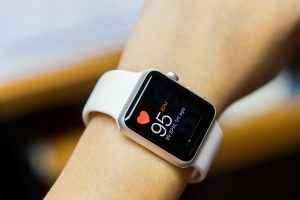We’ve digitized calling a cab, getting our groceries and communicating with friends, so it’s only a matter of time before we totally digitize health, too. If you’re not completely up on the world of healthcare technology, you might not know that it’s already halfway to a total digital revolution—pairing words like “blockchain,” “the cloud” and “big data” with healthcare is now the norm, so patients and caregivers alike need to be on their digital A-game.
Experts are already speculating that Amazon, Apple and Google will soon join Microsoft in developing new software for electronic health records, proving that there’s some big opportunity in the fusion of health and tech. But why the digitization of healthcare, and why now? Besides the obvious—the fact that almost everything is becoming digitized—a digital shift could help improve patient care and make better health more accessible to patients and caregivers.
The Advantages of the Electronic Health Record
With big name companies jumping on the Electronic Health Record (EHR) bandwagon, it’s evident that there’s something to be said about the benefits of taking health records digital. Although electronic health records aren’t exactly new, they’re becoming more and more mainstream, and health-focused developers are figuring out new ways to make them more valuable and secure. These records allow providers to track data, monitor patients, communicate with other practitioners and generally supply better care.

But, as with any new technology, there’s a risk factor to EHRs, too. Specifically, many patients and providers are weary of their security factor. If such records are even a tiny bit vulnerable, patients lose trust and practitioners put themselves at risk of malpractice. To combat this, digital health record developers are doubling down on the digital aspect, using blockchain technology and encryption to ensure that EHRs are as safe as possible. In other words, technology is being used to solve its own problems.
The Internet of Things and Healthcare
It seems like the obsession with the Internet of Things (IoT) has died down somewhat, but at the same time, it appears to be picking up major steam in the medical realm. From seemingly out-there ideas—a “smart” toilet that tracks your health, for example—to mainstream essentials like fitness-tracking watches, there’s no better partnership than connected devices and consumer health. The idea is that internet-enabled goods can better help us track, adjust and understand our health.

Virtual Care: Video Check-Ups and More
Speaking of remote care, that’s not something that healthcare providers are overlooking, either. Many of the big-name health systems in the U.S. have already adopted the practice of video check-ups, including the Cleveland Clinic, Mayo Clinic, UC Davis Health and more. In fact, Sacramento-based UC Davis Health was one of the first to develop a virtual clinic, which offers appointment-free care for treating and diagnosing common conditions like cold and flu, pink eye, rashes, allergies, sore throat and urinary tract infections in women.
One of the biggest benefits of remote care is that it helps keeps doctors, nurses and other patients safe from contamination, which can help quell the spread of viruses, especially during flu season. Of course, the solution is also extremely desirable to patients who might not feel well enough to travel to the doctor’s office when sick. But the best part about video healthcare is that it saves the consumer money, as health systems typically charge about half the price of an in-person visit for such services.
What About Virtual Reality?
Is there any industry that’s not being totally shaken by virtual reality? VR is the new frontier of gaming, shopping, education and, yes, healthcare. In fact, virtual therapy can be used in the treatment of autism, chronic pain, lazy eye and a myriad of other health conditions. For example, it’s already being used to facilitate social therapy and exercises in patients with autism. The theory is that by putting patients in virtual worlds that look and behave like real ones, they can practice social scenarios with less pressure.
The promise of VR for pain management is, too, an enticing one, and one that could help dampen the pervasive effects of the opioid epidemic. Researchers are studying the use of the technology in post-surgery care and the treatment of chronic pain, and the results are good. In one study, participants who were asked to partake in a 5-minute VR session showed a 66 percent reduction in pain during the session and a 33 percent reduction in pain at the end of the session.
The Downsides
As you can see, there are plenty of upsides to the digitization of health. The proper software, hardware and training could help caregivers develop all-new treatments while saving the consumer money at the same time. These advancements could also help deliver essential care to poor and rural areas. But there are some hurdles in the way—doctors and physicians are often skeptical of these technologies’ security measures, and developers and startups find that medicine is notoriously difficult to scale.
With that being said, as fast as physicians are adopting digital solutions, private entities are working to correct some of the biggest challenges that come with them. And if practitioners decide not to jump on the digital health bandwagon, well…there’s a good chance they’ll be left in the dust. Adopting new, digital healthcare technologies isn’t just recommended, it’s vital for the success of the modern-day caregiver and patient.
At HealthSplash, Kelley Bugler is privileged with telling and showing the world how our healthcare technology and platform are going to change lives. She communicates and connects with our community over many different media outlets.
